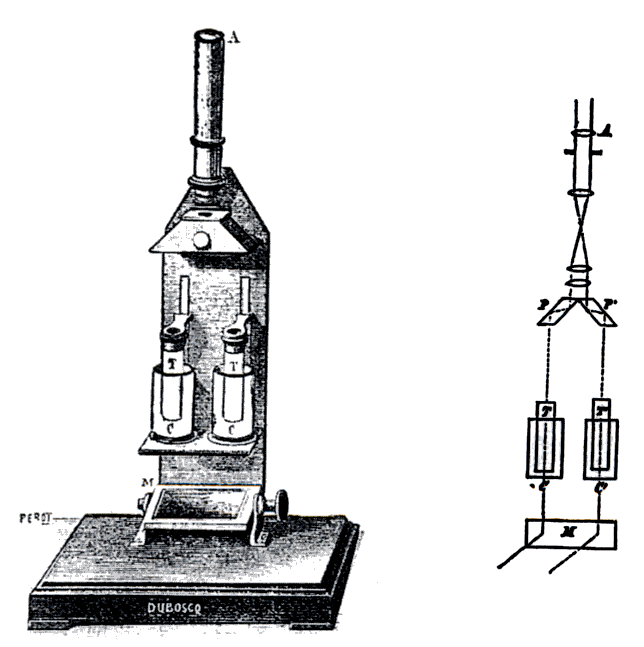|
Colorimetry (chemical Method)
In physical and analytical chemistry, colorimetry or colourimetry is a technique used to determine the concentration of colored compounds in solution. A colorimeter is a device used to test the concentration of a solution by measuring its absorbance of a specific wavelength of light (not to be confused with the tristimulus colorimeter used to measure colors in general). To use the colorimeter, different solutions must be made, including a control or reference of known concentration. With a visual colorimeter, for example the Duboscq colorimeter illustrated, the length of the light path through the solutions can be varied while filtered light transmitted through them is compared for a visual match. The concentration times path length is taken to be equal when the colors match, so the concentration of the unknown can be determined by simple proportions. Nessler tubes work on the same principle. There are also electronic automated colorimeters; before these machines a ... [...More Info...] [...Related Items...] OR: [Wikipedia] [Google] [Baidu] |
Duboscq Colorimeter 1870
{{surname ...
Duboscq is a French surname. People with the name include: * Genevieve Duboscq (1933–2018), author * Hugues Duboscq (born 1981), Olympic breaststroke swimmer * Jules Duboscq (18171886), instrument maker, inventor, and photographer * Lucien Duboscq (1893–1935, stage actor * Octave Duboscq (1868–1943), zoologist, mycologist and parasitologist See also * Dubosc Dubosc may refer to: * André Dubosc (1866–1935), French stage and film actor * Catherine Dubosc (born 1959), French operatic soprano * Claude Dubosc (1682–1745?), French engraver * Franck Dubosc (born 1963), French actor, comedian and stand- ... [...More Info...] [...Related Items...] OR: [Wikipedia] [Google] [Baidu] |
